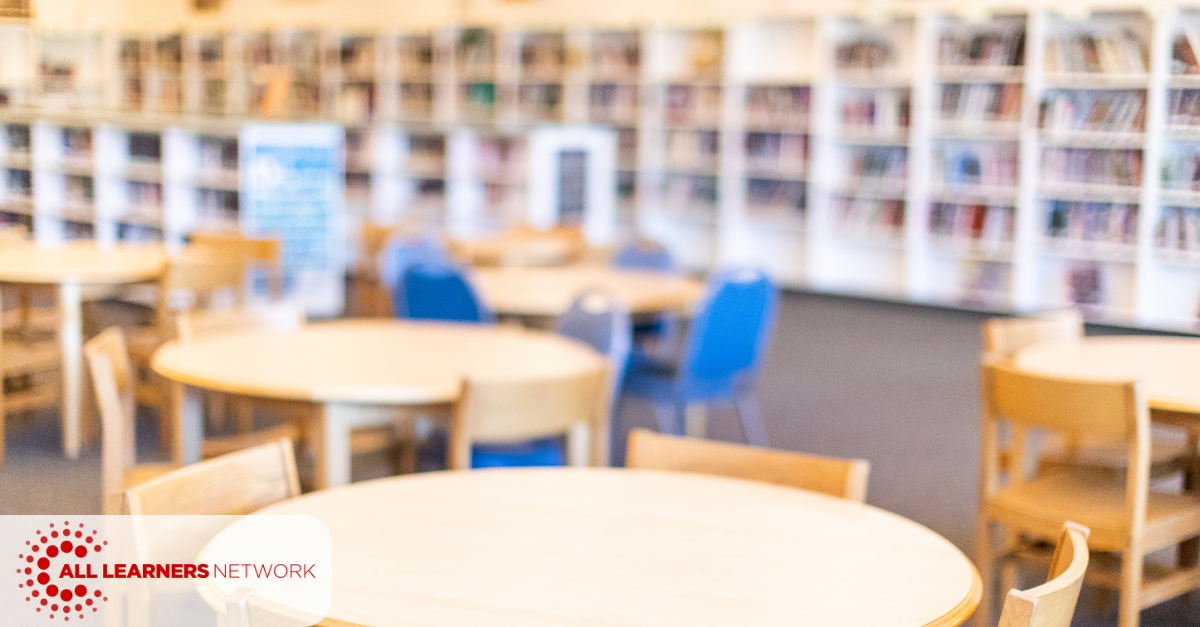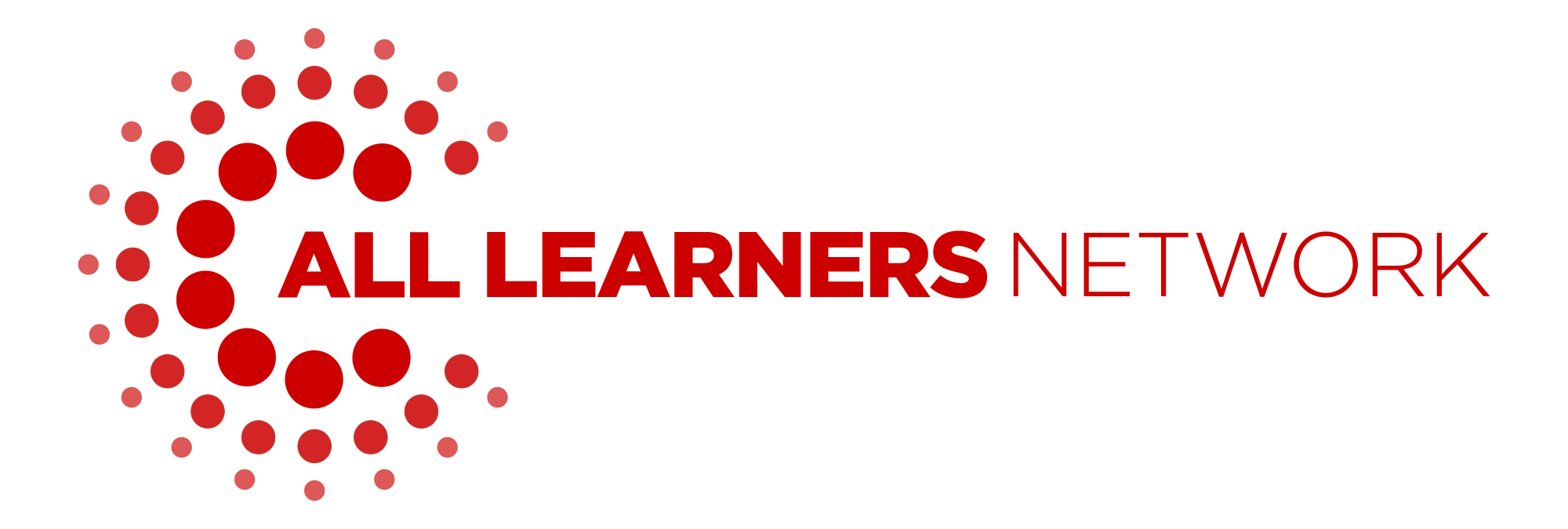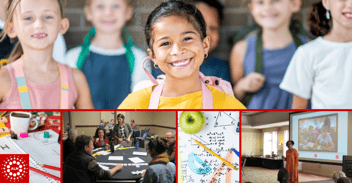
Engaging in Our World Through Math
Published: January 24, 2025
I just wrapped a week and a half off from school and work with my family. It was the holiday season, so we were busy baking, shopping, eating, and having lots of fun together using math. With two math teachers as parents, my children tend to lean toward a love of math. Mostly because we both talk about how much WE love it all the time! Recently though, my older son, a second grader, started saying things like “math is boring.” In contrast, my younger son - a very busy preschooler - is constantly asking questions like “how many hours will this take?” and “who has the biggest pile of Skittles?” He spends his days asking and answering questions to figure out what’s going on around him. After a week of endless questioning and answering I started to wonder - when does math start to become “boring” for our students, instead of being one of the most interesting tools to help us figure out our world?
I started to think about other ways I explored and made sense of my world. I have always been a voracious reader. I was a prominent member of both the Caldecott and Newbury book clubs in my elementary school and relished weekend visits to the local library with my mom to stock up on new books for the following week. I continue to frequent my local library because there is truly nothing better than a hard-covered, plastic-protected, large print book to enjoy on my couch with a coffee and cozy blanket (sorry digital and audiobook readers!). All through my life I used books to help me make sense of the world around me - to learn about facts, history, relationships, self-care, and social-emotional well-being. Whether reading fiction or nonfiction, I knew that books were meant to guide and teach me, to better understand both myself and others. In math, I was taught to follow a procedure to get an answer. If I couldn’t follow it, I perceived myself as “bad” at math. I never saw the value in mathematics as a creative tool to help me answer interesting questions. Instead, I saw it as something I had to do to graduate high school and get to the good stuff - learning how to teach elementary students how to read and write. Fast forward to my master’s program and subsequent career path and I now see the beauty, creativity, and joy in mathematics. Yet, I’m still left wondering, where does this change along the way? Will my curious, creative preschooler start to think math is boring, too? If so, when? And why?
Dr. Lou Matthews, founder of InspireMath and lead author of Engaging in Culturally Relevant Math Tasks, K-5, describes mathematics as a tool to empower students, helping them make connections to themselves, their communities, and the world around them (Matthews et. al, 2022). When I think about my preschooler reflecting on how long he has until it’s time to go to school and my second grader wondering how far it is to walk to the playground and whether or not he should choose to bike instead - I see the way mathematics can help children understand their own experiences and use that to make informed decisions. When I hear my students and their friends setting up a lemonade stand to raise money for the local animal shelter (thank you Jacqueline Davies and The Lemonade War), taking into consideration how much their materials cost and how much they need to charge per cup - I see the way mathematics supports children in solving problems relevant to their community. Yet, what we often see in our schools is mathematics delivered in a “one size fits all approach” using tasks that are not just irrelevant to our students, but often don’t make sense and are uninteresting to solve. In preschool, my son spends time using math to answer his questions, but by the time he is in second grade, he is solving math problems that accompany a journal page written by a program that has no idea what his life circumstances and interests are. By second grade, math is no longer interesting and fun -” math is boring.”
The remedy to this challenge is not throwing our core programs out the window - a core program is necessary to ensure we have the resources to support engagement in all of the Common Core State Standards (CCSS) throughout a school year. At the same time, there is no program written for the experiences the actual human beings in front of you are having, nor can it reflect all of the experiences of humanity across the globe. This is where we come back to my colleagues’ view of using a program with integrity, not fidelity. Simultaneously, we need to consider opportunities to weave in as much of our students’ interests and real questions about their world into our math classes as possible.
How do we ensure we use our core resources while engaging in asking and answering real life questions that we can use math to help us understand?
1. Bring visual images from around your community into your classroom - One key component of the All Learners Lesson Structure is a Launch. Launch is a daily number sense routine, used in the first 5-15 minutes, focusing on purposeful, discussion-rich learning opportunities. The goal is to encourage all students to engage in mathematical thinking while promoting a sense of belonging. I love weaving in photos from our local community or throughout the world at the beginning of a math class and discussing open-ended questions like “How many and how do you know?” and “What’s the same and what’s different?” Through this type of discussion, students not only engage in thinking about the world around them through a mathematical lens but simultaneously engage in the mathematical practices that they will need to use in their discussions throughout the remainder of the lesson.
What’s the same? What’s different?

2. Use children’s literature as a relevant context - Students are far more readily able to comprehend a math problem when it is rooted in a context that makes sense in their world. Posing a question related to a book we are reading together ensures all students are included in a relevant and meaningful context because we are all reading the book together. In her essay, “Windows, Mirror and Sliding Glass Doors,” Dr. Rudine Sims Bishop focuses on the importance of children seeing themselves in the books they read. Her research and teaching on multiculturalism in children's literature help us understand that diverse books could help break down stereotypes, biases, and prejudices (Bishop, 1990). In our classroom, we can consider diverse books that provide these windows, mirrors, and sliding glass doors for our students as anchors for both our literacy and our math class.
At my house, we love the book, The Field, by Baptiste Paul which shares the story of a group of children spending the day playing soccer and having a great time together in the pouring rain. Words like “vini!” and “futbol” are woven throughout the story to celebrate the Creole language spoken by the main characters, as the story takes place in St. Lucia. This story made a wonderful context for a problem we face here in Vermont - soccer in winter! What size area would a space need in order to hold an indoor soccer field with space for spectators? What about a 5 v. 5 player size field? An 11 v. 11 player size field?
3. Use students’ interests to ask authentic questions - Teachers can help students engage with mathematics by using students’ interests as context to make mathematical content meaningful. Students are more likely to engage in mathematics when asked to solve problems that are relevant, realistic, worthwhile, enjoyable, and motivating. In my third grade classroom, I started using photos and key facts about cars like the Bugatti Chiron Super Sport and Ford Mustang and solving problems like - “What’s the same and different about these cars?,” “Which one would get to 100mph the fastest? How do you know?” We were able to engage in a mathematically relevant conversation rooted in questions students were actually interested in pondering.
Some other interesting questions have derived from these types of conversations in my class, like - “How many spools of elastic string do we need to order so each of us can make three friendship bracelets?” and “Is it better to order the super jumbo pack of washable markers at a lower price, or order the smaller sets knowing there are only certain colors we need to add to our collection?” I spent most of my career teaching third grade and we loved exploring different classroom arrangements of our tables based on the area of the classroom and the intended use of each space.
At some point along our educational journey, many of us lost sight of the beauty and joy in asking and answering questions using mathematics. For some, math was really hard and complicated because we didn’t fit in the “I do, you do” approach. For others, it was just boring and for a subset of us, we were terrified that we would now be in the situation to teach someone else’s children how to do it. I am left wondering, what would math feel like if we never lost that curiosity? The desire to ask and answer questions - to figure out why and how to do something - using mathematics as a tool. As we shift our practice to a more inclusive approach that is supported by a learning environment co-created alongside our students with their needs and interests in mind, I wonder what our students will share about their feelings toward mathematics in the future? My hope is that we will create a world with far more curious, problem solvers who have all of the tools at their disposal to ask questions, make sense of problems, and seek answers.
Click here for the printable version.
What Now?
1. Read “Counting Collections are All Around Us” for specific ideas on how to center your students in the learning so that they can see themselves as mathematicians.
2. Create an All Learners Online (ALO) Free account to find launch images and more resources that will help students connect math to their lives.
3. Bring All Learners Network (ALN) into your school or district for embedded professional development.

All Learners Network is committed to a new type of math instruction. We focus on supporting pedagogy so that all students can access quality math instruction. We do this through our online platform, free resources, events, and embedded professional development. Learn more about how we work with schools and districts here.



.png?width=352&name=ALN%20Hero%20Images%20(26).png)

